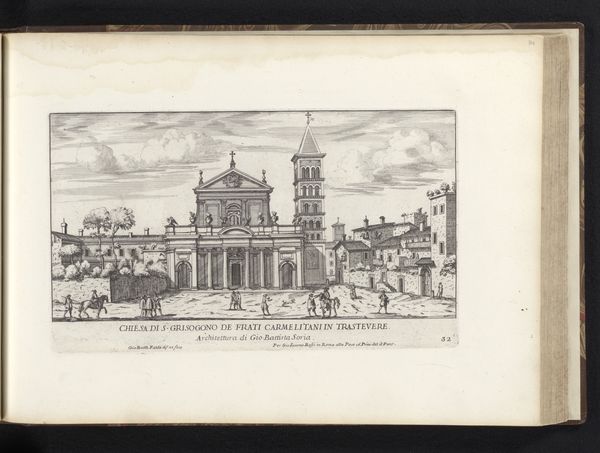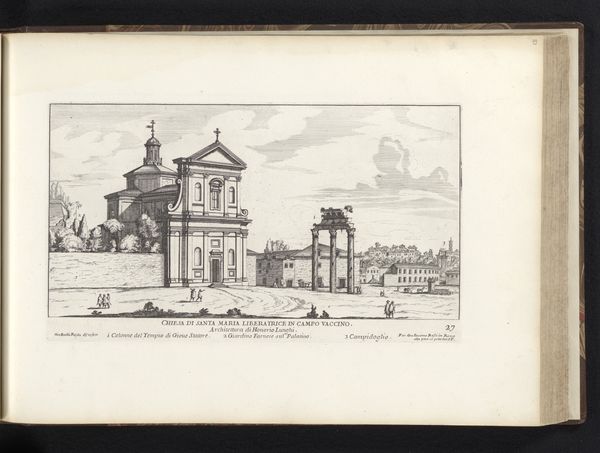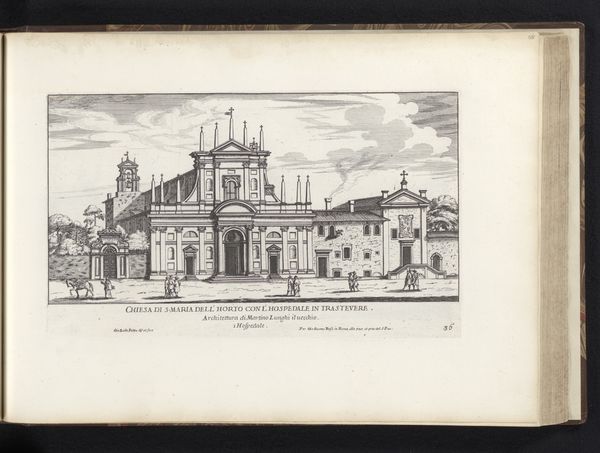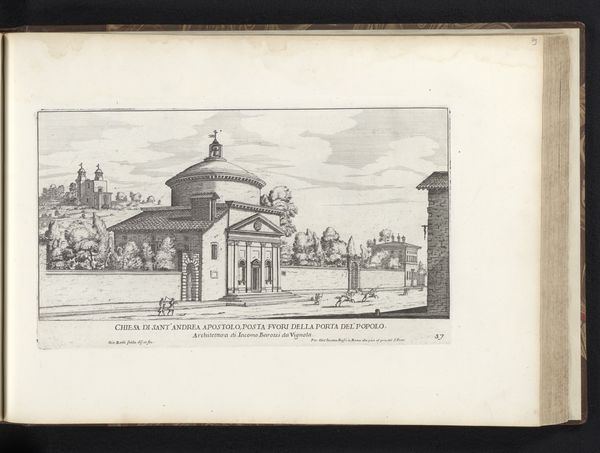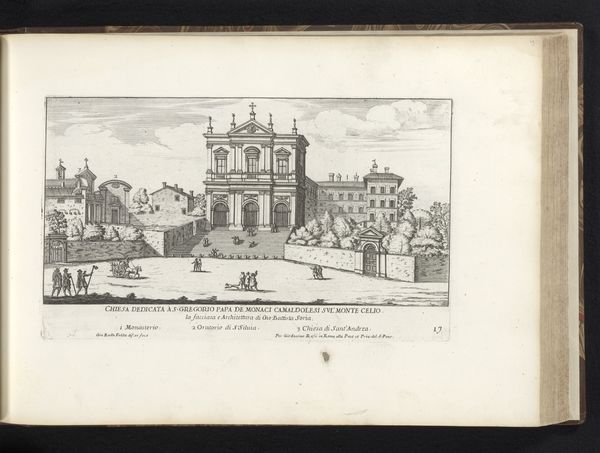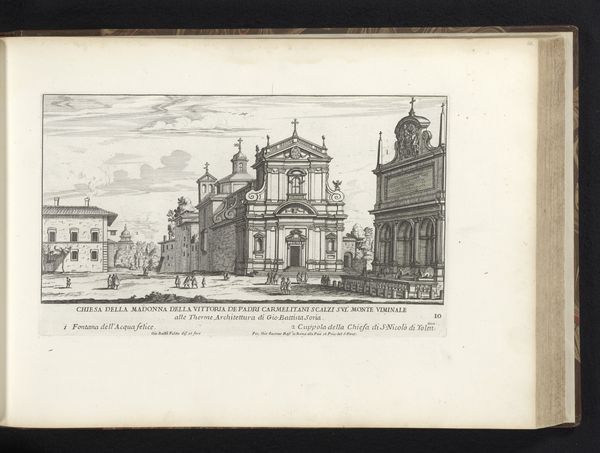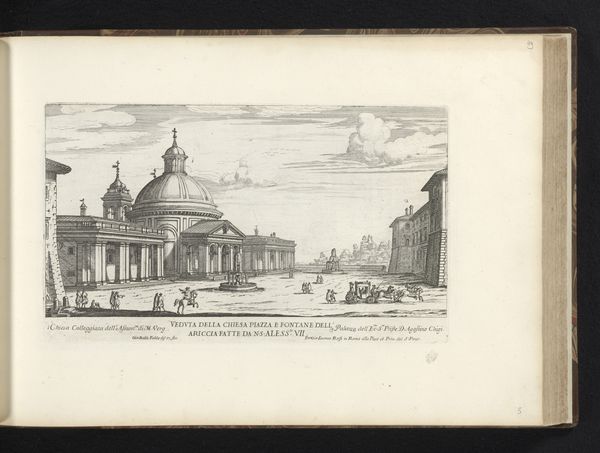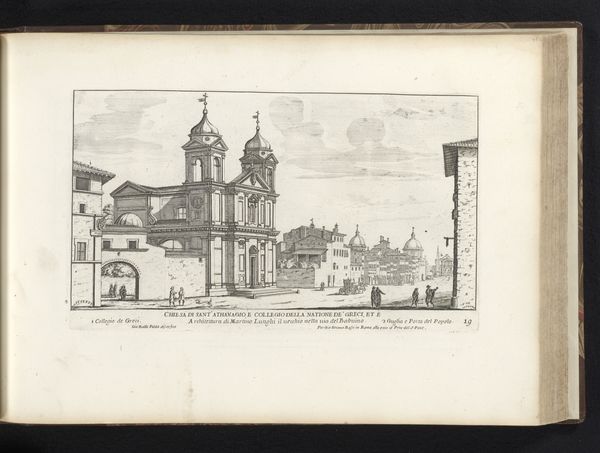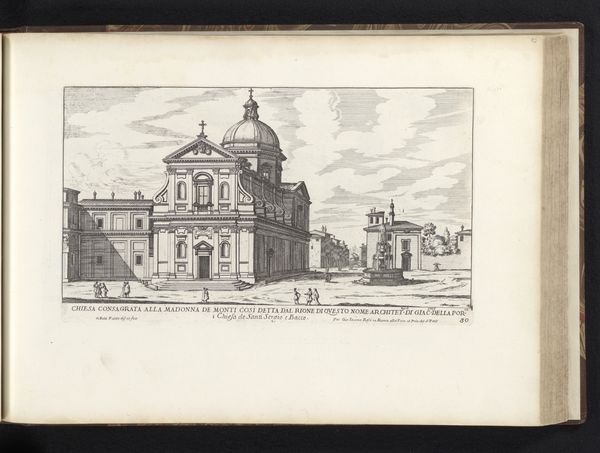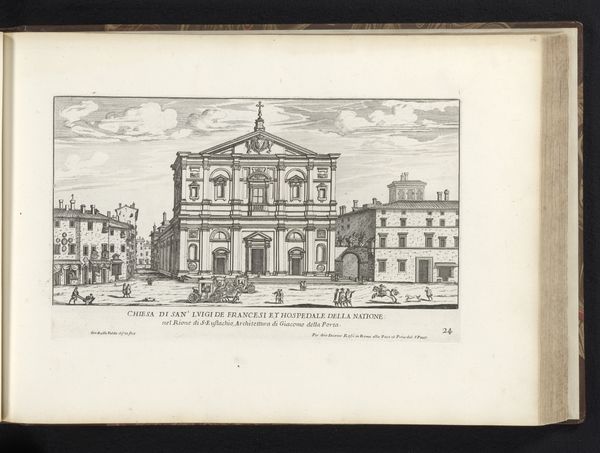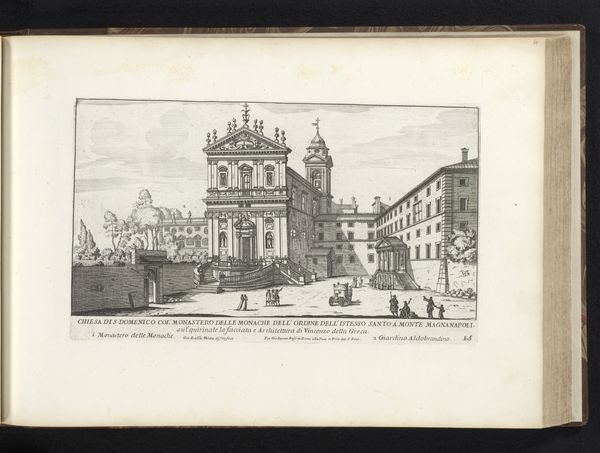
print, engraving, architecture
#
baroque
#
pen drawing
# print
#
cityscape
#
engraving
#
architecture
Dimensions: height 169 mm, width 286 mm
Copyright: Rijks Museum: Open Domain
Editor: We are looking at Giovanni Battista Falda’s “Madonna di Galloro te Ariccia,” an engraving from around 1665 to 1667. The fine lines are incredible. What draws me in is how meticulously the artist captures the architecture; the church almost seems to rise off the page. How do you read the construction of space in this piece? Curator: Note how the geometry dictates the structure; each component adheres to mathematical harmony. The balance achieved is particularly evident when scrutinizing the relationships between verticals and horizontals. Further consideration could be given to the distribution of tonal values and textures. Ask yourself if the baroque structure informs a specific hierarchy. Editor: Hierarchy as in the Church's social hierarchy being subtly represented by the architecture itself? Curator: Precisely, yet consider that architecture itself is not merely a backdrop. The printmaker uses architecture and its composition to define both religious and aesthetic ideology through calculated relationships. Notice the use of perspective, it’s a structured decline used to create a focal point that invites close observation of form. Editor: It's so easy to get caught up in what is depicted and miss that level of analysis. What does Falda seem to emphasize? Curator: The composition reveals a carefully calculated arrangement, with attention devoted to form, shadow, and space to lead the viewer. Consider how Falda uses line to evoke a three-dimensional structure on a two-dimensional surface, then consider what this implies. Does the manipulation underscore an intellectual statement about the illusion of the real? Editor: I see what you mean. I was looking at *what* was depicted, instead of *how* it was depicted, the relationships between elements of the image. It is almost like the image is making an argument about itself. Thanks for the insight. Curator: It's been a pleasure. Reflecting on form offers just one analytical pathway. What other avenues of interpretation does the structure invite?
Comments
No comments
Be the first to comment and join the conversation on the ultimate creative platform.
